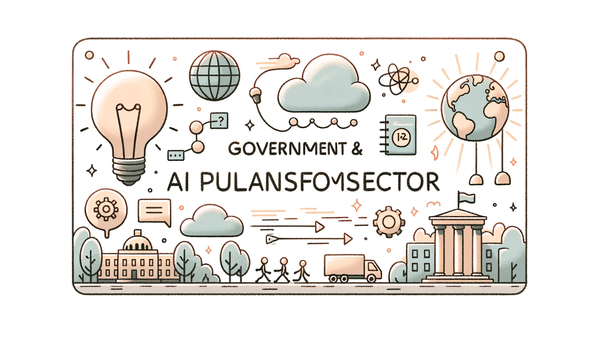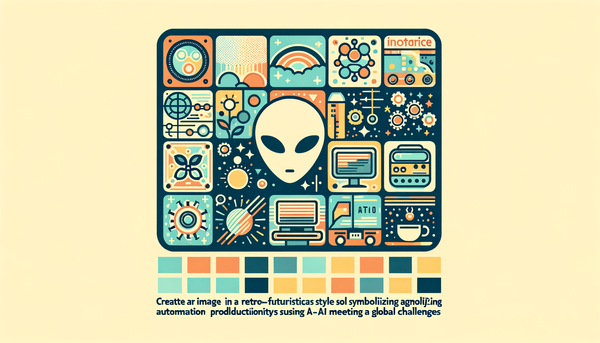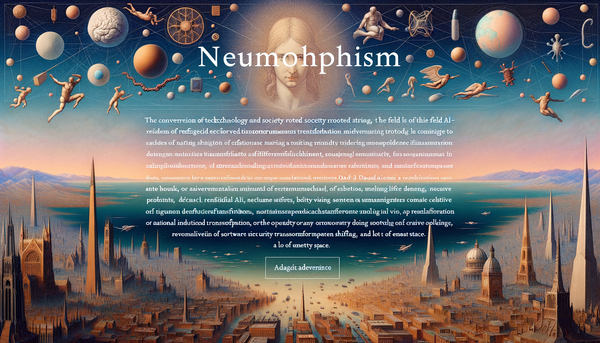Exploring the Evolving World of AI and Technology
94.5% of data center operators now report surging storage needs fueled by AI workloads, while innovations in mobile photography and chip technology are rewriting the rules of engagement in our tech-driven lives. This synthesis of breakthroughs in consumer hardware, AI workplace automation, chip manufacturing, and sustainable practices spotlights a transformative era promising efficiency, affordability, and a greener future.
Revolutionizing Consumer Devices and Mobile Photography
Samsung’s Galaxy S25 Ultra exemplifies a leap in melding artistry with raw computational power. Its titanium frame, enhanced durability through Corning Gorilla Armor 2, and a captivating 6.9-inch AMOLED display have raised the bar in design aesthetics. Underneath, the Qualcomm Snapdragon 8 Elite processor not only catapults performance benchmarks but also supports intelligent battery management strategies. At its heart is an ingenious AI integration powered by the revamped One UI 7 and Gemini AI, which streamlines tasks ranging from real-time translation during calls to sophisticated image editing techniques. These functionalities have redefined everyday tasks, making the Galaxy S25 Ultra more than a communication tool—it’s a creative assistant that empowers every user.
Similarly, the mini PC landscape is undergoing an evolution of its own. The GMKTec EVO-X2, featuring AMD's Ryzen AI Max+ 395 APU paired with Radeon 8060S and leveraging the latest RDNA 3.5 architecture, demonstrates how compact workspaces can accommodate the demands of advanced AI, creative software, and dynamic multitasking. This machine’s impressive memory and storage configurations make it a stellar example of making high-performance computing accessible to a broader audience, while its affordability invites even more tech enthusiasts to experience premium AI processing firsthand.
For more technological insights and debates on innovation, do check out our feature on AI Innovations & Industry Insights at AI.Biz, where these trends and more spark riveting discussions.
Automation in the Work Environment: Balancing Efficiency and Employment
The AI startup Mechanize is boldly venturing into the controversial terrain of "automation of all work." By creating virtual environments that simulate complex job functions, Mechanize aims to revolutionize white-collar tasks traditionally performed by humans. Treading a fine line between augmentation and complete automation, this initiative has ignited debates on how AI might augment human productivity even as it restructures traditional workplace hierarchies. Echoing insights from MIT economist David Autor, history suggests that while technology displaces certain roles, it invariably enhances the overall productivity and value of labor in the long run.
This narrative is interwoven with the dynamics of the PC refresh cycle. As organizations transition to systems capable of running sophisticated AI tools and Windows 11, sustainability challenges emerge—especially regarding e-waste and energy consumption. A critical aspect here is the adoption of circular design principles, which not only extend product lifespans but also drive down waste and operational costs. Such measures remind us of the proverb:
“Artificial intelligence is not a substitute for natural intelligence, but a powerful tool to augment human capabilities.”
Deployment of AI in business is therefore not just an operational upgrade but an investment in a more intelligent and sustainable workflow.
For further reflections on transforming workplaces through smart automation, explore our latest AI Podcast Update on AI.Biz.
Chip Manufacturing and the Global Semiconductor Landscape
U.S. export controls on AI chips have set off a ripple effect that is reshaping the semiconductor landscape. Recent regulatory moves, particularly targeting Nvidia's H20 GPUs, have opened new doors for domestic industry players like Huawei and Cambricon Technologies. As these companies capitalize on restricted access to advanced U.S. hardware, they are rapidly innovating to fill the void left by industry giants. Cambricon, for example, has demonstrated extraordinary stock growth, an indicator of market confidence in homegrown AI chip technologies that still face challenges in software maturation.
Such unfolding shifts are not only significant in terms of economic impact but also in terms of technological sovereignty and strategic supply chains. With geopolitical undertones influencing access to critical components, the global chip race is likely to yield more self-reliant ecosystems. The nuanced interplay between regulation, market forces, and technological adaptation offers deep insights into the future of AI-enhanced hardware, illustrating that constraints can sometimes accelerate indigenous innovation.
Those interested in the detail of such semiconductor shifts can dive into more in-depth discussions on our AI Innovations Updates page at AI.Biz.
Efficiency in AI: Minimalist Models with Maximum Impact
Microsoft’s BitNet represents a paradigm shift in how we view the resource demands of AI. By leveraging ternary quantization to compress model weights into just three values (-1, 0, and +1), BitNet reduces memory usage to an astonishing 400MB—almost a third of what conventional models require. This breakthrough is emblematic of an era where AI is no longer synonymous with heavy computational requirements. BitNet, by running efficiently even on standard CPUs like Apple’s M2 chip, democratizes access to advanced AI capabilities while drastically reducing energy consumption.
This move toward minimalism not only makes sophisticated language models accessible but also fosters a more sustainable approach in an era when energy consumption is under intense scrutiny. As research continues with similar innovations across the AI ecosystem, the promise of less energy-intensive AI models may soon translate to a significant reduction in the carbon footprint of data centers globally.
DeepMind, another heavyweight in AI research, continues to push the boundaries toward artificial general intelligence (AGI). Their work to build AI that mimics human learning and reasoning while integrating diverse forms of information is a reminder that the AI of tomorrow will be both efficient and deeply intertwined with human values. This blend of efficiency and expansive potential will likely define the next wave of AI innovation.
Sustainability: Confronting the Environmental Impact of AI
The rapid adoption of AI is not without its challenges, especially when it comes to sustainability. A recent Seagate study revealed that nearly all data center operators are witnessing exponential growth in storage demand, a trend directly correlated with AI’s expanding footprint. With over 94% of respondents acknowledging this pressure, and 97% expecting even more significant growth, it becomes clear that energy consumption and carbon emissions are critical issues that need strategic intervention.
In response to these challenges, there is a growing trend toward adopting energy-efficient technologies. A notable development is the resurgence of hard disk drives (HDDs) over SSDs in certain contexts, thanks to innovations like Seagate’s HAMR-based Mozaic 3+ platform. With improved energy density and a dramatic 70% reduction in embodied carbon per terabyte, HDDs are emerging as a sustainable alternative that effectively balances speed, cost, and environmental impact.
Parallel to these advances in data storage, digital advertising has also seen transformative changes driven by AI. A recalibration of ad placements via intelligent algorithms not only boosts performance but simultaneously cuts down on CO2 emissions. With digital advertising historically marred by hidden inefficiencies and environmental costs, the infusion of AI into the sector provides a compelling blueprint for sustainable marketing practices.
Furthermore, the imperative for sustainability is evident in the IT sector’s transition during the PC refresh cycle. With concerns over growing e-waste and resource inefficiencies, circular IT design principles—emphasizing repairability, upgradability, and modularity—are more important than ever. These strategies help extend product lifecycles, lower energy consumption, and reduce waste, thereby addressing both environmental and financial concerns.
Microsoft’s impressive early achievement in reaching a 90.9% reuse and recycling rate for its data center hardware further underlines how corporate initiatives can align operational efficiency with environmental stewardship. By pioneering innovative recycling methods and establishing Circular Centers around the globe, Microsoft demonstrates that technology can indeed march hand in hand with a sustainable future.
For those interested in exploring the crossroads of sustainability and AI, our recently updated section on AI News & Podcast Update on AI.Biz offers a rich discussion on these challenges and triumphs.
Looking Ahead: The Convergence of AGI and Sustainable Innovation
Artificial General Intelligence (AGI) represents one of the most ambitious frontiers in AI research today, with DeepMind's ongoing projects capturing the imagination of both scholars and practitioners. The aim is to transcend current models by developing systems capable of human-like versatility, but with machine precision and efficiency. This transformative goal is as much about ethical alignment as it is about technical prowess, emphasizing AI’s potential to be both a catalyst for invention and a partner in responsible progress.
As AI strives to achieve new heights, the necessity of an integrative and sustainable approach becomes ever more apparent. As one expert once noted,
"Artificial intelligence is not a substitute for natural intelligence, but a powerful tool to augment human capabilities."
Embracing this philosophy means every advance in efficiency, every reduction in energy use, and every smart integration in our daily lives brings us closer to a future where technology elevates society without compromising the environment.
This convergence of innovation and sustainability sets the stage for what could be one of the most exciting eras in modern technology. We must continuously question, innovate, and evolve our approaches, ensuring that our technological pursuits are as mindful of our planet as they are ambitious in scope.
Further Readings and Insights
- Samsung’s Galaxy S25 Ultra: Blending Design and AI
- Mechanize: The Bold Promise of Automating All Work
- Chip Controls and the Rise of Domestic AI Hardware
- AI Demand and the Sustainability of Data Centers
- Microsoft’s Journey to a Zero-Waste Future
- DeepMind’s Quest for Artificial General Intelligence
Final Thoughts
From AI-driven mobile innovations and agile automation startups to the sustainable strategies redefining our digital ecosystems and the minimalist marvels that are challenging the need for heavy GPUs, the evolving landscape of AI encourages us to reflect on how these technologies will shape our future. As we continue to witness these dynamic shifts, one thing remains clear: the integration of technology in our lives is not a transient trend but a profound transformation, poised to sculpt every facet of modern existence.




